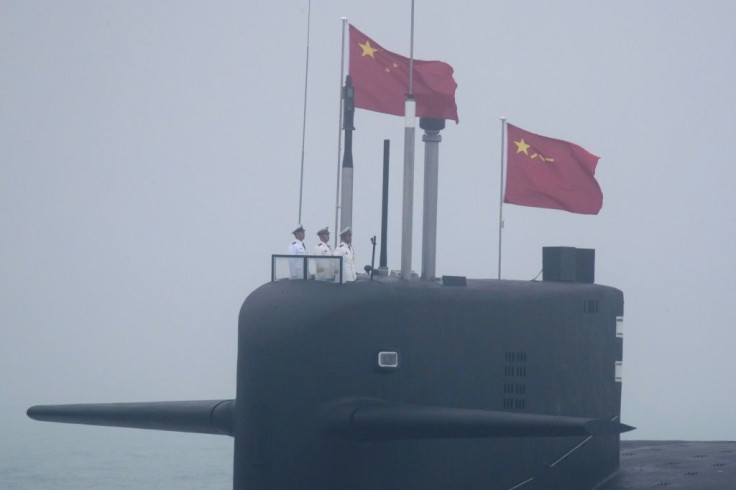US Says China Has Deployed Long-Range ICBMs On Nuclear Submarines
KEY POINTS
- China's Type 094 (Jin-class) submarines were known to be equipped with JL-2 ballistic missiles
- Like its pervious version the JL-2, the new JL-3 is designed to deliver multiple warheads, including nuclear warheads
- The JL-3 missile is reported to have a range to hit continental US "from a protected bastion within the South China Sea"
The U.S. has for the first time acknowledged that China has deployed its new JL-3 long-range intercontinental ballistic missiles on six PLA Navy's Type 094 (Jin-class) nuclear submarines, allowing it to target the U.S. continent from closer to its own shores.
According to a report by Bloomberg, Admiral Sam Paparo, the head of the U.S. Pacific Fleet, told military reporters at a conference in Washington on Friday that China's six Jin-class nuclear-powered submarines are now "equipped with JL-3 intercontinental ballistic missiles."
"They were built to threaten the U.S.," he said, adding that the U.S. will "keep close track of those submarines."
While the Type 094 (Jin-class) submarines were known to be equipped with JL-2 ballistic missiles, this is the first acknowledgment from the U.S. that China has deployed its latest JL-3 missiles, which it has been testing since 2018. Like the JL-2, the JL-3 is designed to deliver multiple warheads, including nuclear warheads.
In May 2021, the South China Morning Post reported that China was seeking to upgrade its Type 094 submarines, allowing them to carry the more powerful JL-3 missiles.
While the JL-2 is said to have a range of about 8,000 – 9,000 km (approximately 4,900 to 5,500 miles), much is not known about the capabilities of the JL-3. The new missile is reported to have a range of over 9,000 to 10,000 km (approximately 5,500 to 6,200 miles), which is comparably lesser than the range of the American Trident II missile, which has a range of 12,000 km (7,500 miles) or the Russian Bulava submarine-launched ballistic missiles (SLBMs).
Raising speculation about the range of the JL-3, the U.S. Strategic Command Commander Admiral Charles Richard told the Senate Armed Services Committee in March that the newly developed JL-3 missiles having a longer range would "allow the People's Liberation Army Navy's (PLAN) now six JIN-class ballistic missile submarines (SSBN)" to target continental US "from a protected bastion within the South China Sea."
However, commenting on the Bloomberg report, Hans Kristensen, Director of the Nuclear Information Project, Federation of American Scientists, said on Twitter the JL-3 could target more, but not all continental US.
In a series of tweets, Kristensen pointed out that "unlike the JL-2, the longer-range JL-3 SLBM can deliver "multiple" warheads. But the weight of full load would probably reduce maximum range," of the missile.
1/2 - China has replaced JL-2 SLBM on 6 SSBNs with longer-range JL-3, US Navy says. Bloomberg report reprint here: https://t.co/dp52obC7qL
— Hans Kristensen (@nukestrat) November 19, 2022
10,000+ km range can barely reach Washington state from South China Sea. Could target more but not all continental US from Bohai Sea. pic.twitter.com/AmqHw2E1gL
In the following tweet, Kristensen stressed that "despite its longer range, the JL-3 cannot hit anywhere in the United States (or elsewhere) that cannot already be hit by China's existing land-based missiles," a capability that Beijing has possessed "since the 1980s."
Meanwhile, Chinese state-run Global Times, which said that Beijing has not announced the commissioning of the JL-3, slammed the U.S. for having "ulterior motives" by hyping the "China Threat" to increase military presence in the Asia-Pacific.

© Copyright IBTimes 2025. All rights reserved.






















